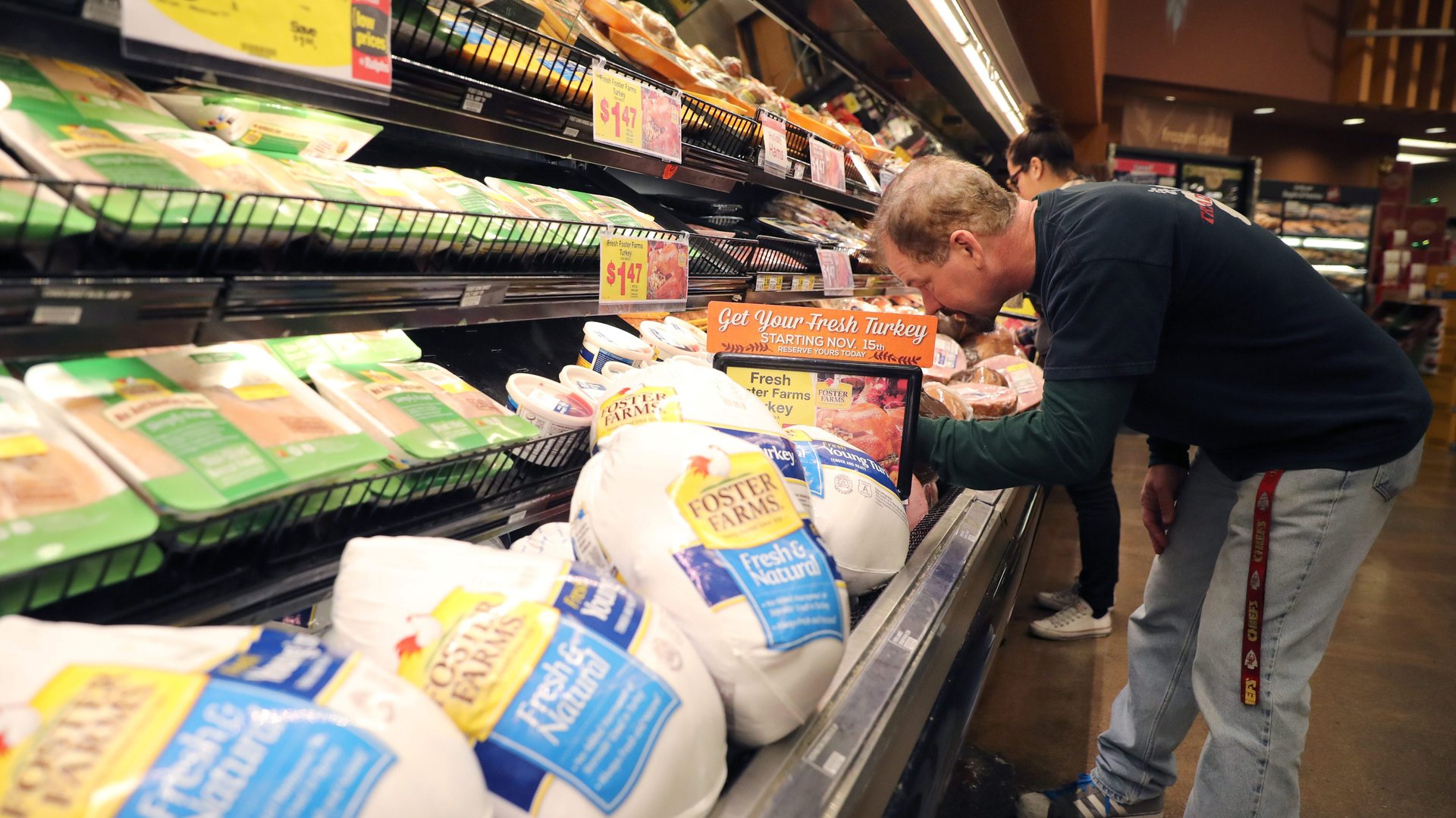The price of everything from wine to college tuition keeps climbing in the US. How worried should you be?
US consumer prices have risen more than expected, stoking fears that inflation is about to get much higher.


US consumer prices have risen more than expected, stoking fears that inflation is about to get much higher.
The Consumer Price Index (CPI), which tracks the price of everything from cereal and wine to college tuition, grew 0.5% last month—slightly higher than the expected 0.3%. That may sound miniscule. But inflation, in the US and around the world, has been largely muted in the recovery from the 2008 financial crisis.
Where are the rising prices coming from? According to the US Department of Labor, rent, gasoline, healthcare, clothes, and food all got a bit pricier. (Discounting volatile food and energy prices, the CPI edged up just 0.3%.)
There are two sides to inflation—the kind fueled by rising consumer demand, and the kind brought on by higher wages. Growing paychecks feed spending, which in turn feeds higher prices and induces workers to demand higher pay.
From the looks of it, both wages and prices are on the up. In its most recent jobs report, the labor department confirmed American wages were finally on the rise (paywall). US stocks promptly experienced their worst week in two years.
The data released today (Feb. 14) suggests consumer products are pricier too. Initially, major stock market indexes tumbled. They soon recovered. Bonds sold off, pushing yields higher.
Is inflation actually rising?
In the 12 months since January 2017, the CPI is up 2.1%, the same year-to-year increase from December. Remove energy and food, and prices over the same period rose less than 2%.
Both measures, however, are down compared to this time last year. From January 2016 to January 2017, prices, excluding energy and food, grew by more than 2.2%.
The CPI, investors’ favored measure for inflation, is controversial. The index once tracked a fixed basket of goods determined to be relevant to the average American consumer. In time, this changed, and the CPI tracked a constant standard of living—the basket of goods would change to reflect what was necessary for the times. In its latest iteration, it weighs goods unequally in case people substitute a cheaper good for a more expensive one. If you don’t account for these kind of swaps, you’ll overstate inflation.
All this means that the CPI, at best, is a fuzzy indicator for inflation. Investors are taking this to heart—by mid-afternoon, stocks had bounced back.
“We do not think investors should wed their investment outlook to today’s data alone, not least given it is clouded by methodology changes and weather-related distortions,” says Andrew Wilson, an executive at Goldman Sachs.
This is partly why the US Federal Reserve, tasked with keeping inflation in check, relies on a different measure. The personal consumption expenditure price index (PCE) also tracks a basket of goods like the CPI—and instead of focusing on what households are buying, it focuses on what businesses are selling.
Historically, the PCE reports lower inflation. As of its most recent release, it’s not only lower than the CPI, it’s below the Fed’s target.
Can inflation be good for the economy?
Right now, any sign of inflation appears to be bad for the markets. It fuels fears that central banks around the globe will raise rates further and faster, heralding the end of the easy-money environment that’s been so good for business in the past few years.
That doesn’t mean inflation is inherently bad for the economy.
Hyperinflation, where prices soar so fast that menus have to be updated in high frequency and people swap cash for precious metals and jewelry, is devastating for an economy.
Moderate inflation doesn’t have to be. If prices remain low, consumers might expect even lower prices in the future, and hold off purchases. Flagging demand for goods can cause the economy to shutter.
Gently growing prices mean rising paychecks, competitive bargaining between bosses and workers, and healthy spending are in motion. Modest inflation, ultimately, leaves everyone feeling a touch richer.
That’s why the Fed’s target for inflation is 2%. Economists believe that’s the appropriate level for inflation to grease the economy’s wheels, without dramatically lowering the value of cash.
For the first time since the financial crisis, there are persistent signs that the long-awaited 2% inflation rate—a sign of a healthy economy—might be here to stay.
So, why do markets fear inflation?
It’s telling that an inflation reading that’s in line with a healthy economy initially jarred markets (and what may have calmed them was the belief that the reading didn’t actually mean anything). Investors have been soothed by economic fundamentals that suggest we are well into a long-term recovery—low unemployment, strong job growth, and expectations-beating company earnings—while enjoying policies that feel like we’re in the midst of a recession.
The Fed has raised rates since the financial crisis, but they’re still low. It announced the unwinding of a program that injected trillions into the US economy, but it is to happen slowly and gradually, over five years.
All while, the Trump administration wants to spend like it’s 2008.
The White House’s proposed spending bill, at $4.4 trillion, is larger than Barack Obama’s fiscal stimulus during the depths of the recession. Couple that with a generous tax cut, and that’s enough money to supercharge the economy. It’s difficult to imagine a better set of events for the stock market.
Higher inflation would complicate this picture. So the stock market will likely fret over inflation again. For now, the rest of us shouldn’t.